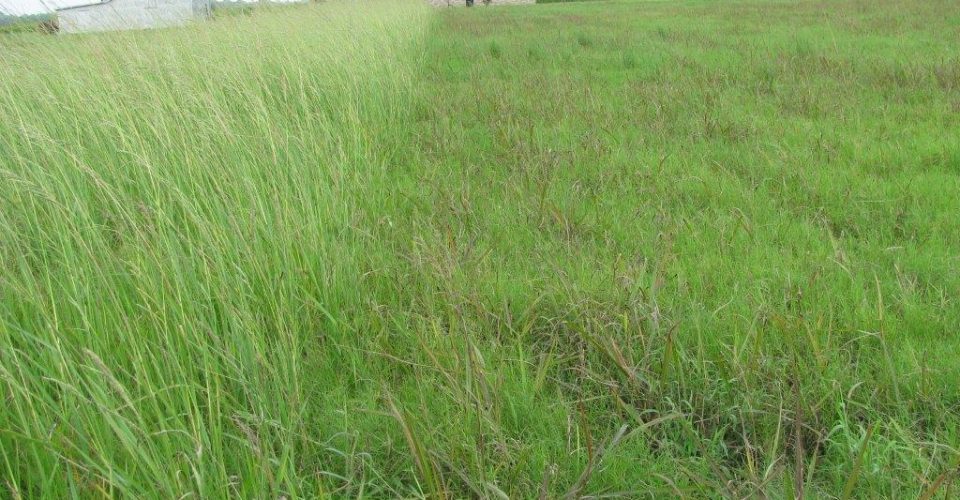Vaseygrass (Paspalum urvillei)
Vaseygrass is a large perennial warm season bunch grass that is native to South America. It was introduced as a possible forage plant for grazing livestock.
Vaseygrass is found on many soil types throughout the Gulf Coast regions of the United States, Carolinas and out to California. It thrives in wetter soils of the South and in disturbed areas and roadsides that receive extra moisture in drier areas.
- Can reach a height of more than 6 feet.
- Grows upright with leaves coming from the base, as well as along the seed stalks.
- Leaves can grow to more than 1/4 of an inch wide.
- Has a seed head that is typical of the genus Paspalum, where the seeds are arranged in rows along the panicle, or seed head. The head can have 8-50 branches of seeds in rows of 4. There are usually several slightly nodding seed stalks per plant giving the coarse grass plant a curved appearance.
Vaseygrass has very little value as a food source for grazing animals and wildlife, but it is used as nesting cover for ground-nesting species of birds.
Vaseygrass can be controlled if it becomes a problem with a properly timed application of herbicide.
Vaseygrass is excerpted from the August 2016 edition of The Cattleman magazine.
Editor’s note: Kent Ferguson, retired rangeland management specialist from USDA Natural Resources Conservation Service (NRCS), is providing us with plant identification photo stories to help ranchers identify those forbs, forages and species growing in the pastures. Additional photos provided by USDA NRCS.



